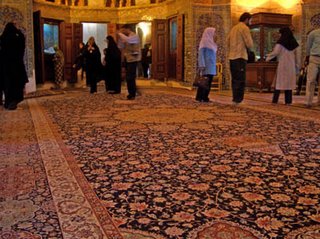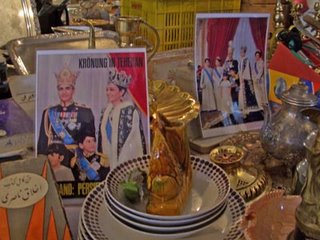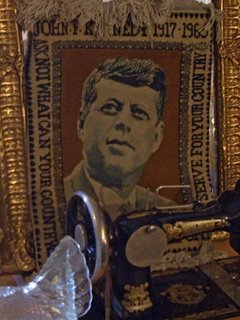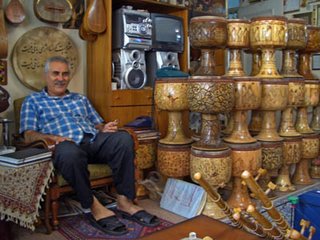
Ostad Helmi, pictured here in his home/showroom, produces most of the tonbak drums in Iran. His walls are hung with a tremendous assortment of traditional musical instruments from Iran and elsewhere. In the gaps are photographs of memorable occasions from his long career.
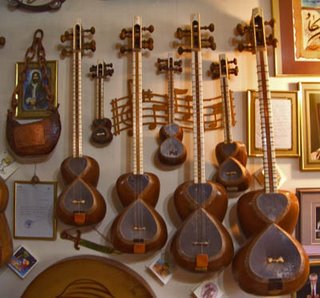
I visited Mr. Helmi to buy my own drum last week. A percussionist friend of mine accompanied me and recommended an udu - a clay jar drum with a circular hole which, when struck correctly, makes a kind of gulping-air sound. Production of this African-style drum has recently been started in Iran. Though fun to play, the udu didn't have quite enough volume for my liking.
So after testing out a few instruments, I finally settled for one of Ostad Helmi's famous tonbaks. It is mainly played with the fingers and has a low, breathy "ton" sound when played in the centre and a much higher, crisp "bak" sound when played near the edge.
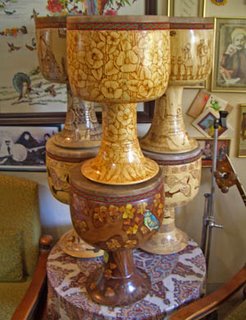
It is a goblet-shaped drum that can be made from a wide variety of woods and skins. It is one of only two distinctively Iranian drums - the other being the daf - and is mainly seen accompanying traditional Iranian music ensembles.
I'm not sure I'm yet playing it in quite the way it was intended but it certainly feels great to bang on a drum! Thanks Mr. Helmi!
Guide to Tehran
© Iranvisitor.com

